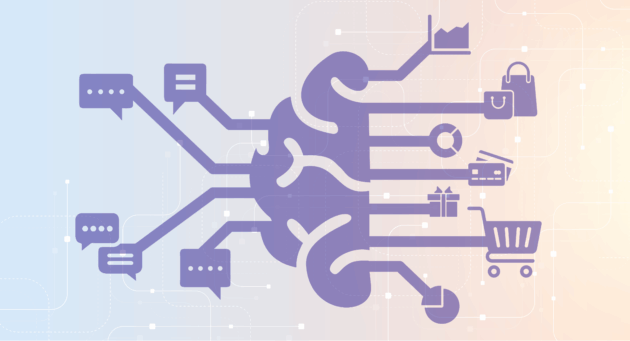It feels like you can’t open LinkedIn these days without tripping over another “revolutionary” AI tool.
Feels exciting, sure, but also a little like being handed the keys to a space shuttle without an instruction manual.
Do you hit the big red button or watch it collect dust while your competition takes off?
When it comes to AI in performance marketing, it’s easy to get swept up in the hype. But in this post, we’re going to keep things grounded. We’ll cut through the noise, explain where AI really earns its keep in performance marketing, and share hard‑won tips from teams who’ve turned algorithms into revenue with Criteo.
Ready for launch?
Why performance marketers need smarter AI right now
Shoppers bounce between apps, sites, and screens faster than you can say “attribution.”
Expectations stay sky‑high, budgets don’t, and every quarter someone asks you to squeeze more juice from the same orange.
Here’s what’s piling on the pressure:
- Budgets playing limbo. CFOs keep lowering the bar, expecting more revenue from the same (or smaller) spend.
- Channels multiplying overnight. Retail media networks, social platforms, video streams, connected TV – keeping up with the must-have channels can make your head spin.
- Customer patience wearing thin. A three-second load time? Too slow. A repetitive ad? Scroll city. Personalization has become table stakes.
- Teams drowning in data. Even small brands generate terabytes of behaviors, transactions, and creative variants. Digging for insights manually feels like bailing out the ocean with a teaspoon.
- Talent pinched by macro headwinds. Hiring freezes mean the same crew now manages 2x the campaigns and 3x the reporting.
If that list makes your coffee taste weaker, don’t worry – AI is built for exactly this kind of chaos.
Properly trained models sift through petabytes in milliseconds, spot patterns you’d never notice, and surface decisions ready for action.
What good AI looks like in the ad stack
We’re all familiar with AI tools that generate text and images in seconds – but some of the most powerful AI actually works its magic quietly under the hood. These behind-the-scenes technologies help marketers create an ad using AI almost on autopilot.
In our realm – ad tech and commerce media – that automation looks a bit like this:
- Predictive bidding values every impression in real time.
- Dynamic creative pulls the perfect product image without a late-night Photoshop session.
- Commerce Audiences surface shoppers you didn’t even know were shopping.
And when the same engine running these tools refreshes bids, audiences, and creatives in milliseconds, performance starts to climb while you sleep.
Why data quality beats model hype
A model trained on generic browsing behavior might guess that Alex wants sneakers.
But a model fed with SKU-level commerce signals knows Alex wants women’s trail-running shoes in size 7 and that she prefers eco-friendly brands. The more specific the data, the better the prediction.
Add trillions of daily signals – views, clicks, carts, and checkouts – and it’s not really about predicting anymore. Instead, you’re essentially reading intent.
Training AI on that kind of breadth means the algorithm can spot a mid-funnel browse session in Sydney at 9 a.m. and match it to an in-store purchase in Chicago eight hours later.
But without the data to fuel that kind of commerce moment, they just won’t happen.
Proof in the performance
Theory is cute, but it’s real-world lift that pays the bills.
We’ve watched brand after brand plug AI into bidding and creative, only to see revenue shift from a slow jog to a sprint. The Criteo AI Lab runs more than 100 thousand algorithm tests every year, nudging performance upward one micro-win at a time until those tiny gains snowball into serious performance wins.
Picture Sarah, a trail-running fan.
She skims a gear review at breakfast, scrolls through shoes on her commute, and promptly forgets them by lunch. AI doesn’t. That evening, she opens a recipe site and spots a dynamic ad featuring the exact pair she favorited – plus a recycled rubber outsole she didn’t even know existed. One click later, she’s checking out. That’s predictive bidding, audience discovery, and dynamic creative working in concert – no late-night tinkering required.
We’ve all wondered whether AI could replace human effort, but don’t worry – marketer intuition isn’t going anywhere.
You still decide budgets, guard brand voice, and pick the big bets. Steerable AI simply pulls the levers faster than any team could. Want to favor margin over volume this quarter? Nudge a slider, let the algorithm fire off thousands of micro-tests, then dig into the results with transparent reporting.
Checklist: 5 questions to ask before you flip the AI switch
Before you sign another IO, check off each of these items to ensure you’re getting the biggest lift out of AI in performance marketing.
- The model trained on commerce‑specific data.
- You can see and adjust its decisions without a support ticket.
- It optimizes in real time or on recent numbers.
- It’s embedded across the platform to inform decisioning at every level.
- It protects consumer privacy while still enabling personalization.
If you’re looking at a vendor that can’t check all these boxes, their AI systems probably aren’t ready for prime time just yet.
Ready for practical AI?
Start small: spin up an always-on acquisition set, layer in dynamic creative, and watch the model learn. Then iterate.
When AI is purpose‑built for commerce and paired with your expertise, performance marketing stops feeling like an endless game of Whack‑A‑Mole and starts looking like a growth engine.
Want to dig a little deeper? Check out our Resource Center or book a peek under the hood with a member of the Criteo team.

















